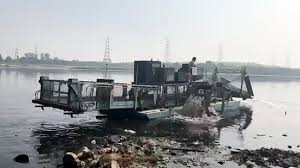Yamuna River : Cleaning Effort

A large-scale effort to clean the heavily polluted River Yamuna commenced recently, guided by a four-pronged strategy, aimed to restore the river within three years.
- Yamuna is the major tributary of the Ganga River.
- It rises in the Himalayas, from the Yamunotri Glacier, at the height of 4,421 meters.
- Originating near Banderpooch peaks at a height of 6,387 meters at Yamunotri Glacier, it travels a length of 1,376 kilometers before merging with River Ganges at Sangam in Prayagraj, Uttar Pradesh.
- It is the longest river in India which does not directly flow to the sea.
- The river water flows through the states of Uttarkhand, Himachal Pradesh, Haryana, Delhi, Uttar Pradesh and Rajasthan out of which only Rajasthan does not fall in its riparian zone.
- It has four main tributaries in the Himalayan region: Rishi Ganga, Hanuman Ganga, Tons and Giri. In the plains, the main tributaries are Hindon, Chambal, Sind, Betwa and Ken. Tons, being the major tributary, contributes to about 60 percent flow of the Yamuna.
- The Chambal River is Yamuna’s biggest tributary on the right.
- The confluence of the two rivers is an especially sacred place to Hindus and is the site of annual festivals as well as the Kumbh Mela, which is held every 12 years.




